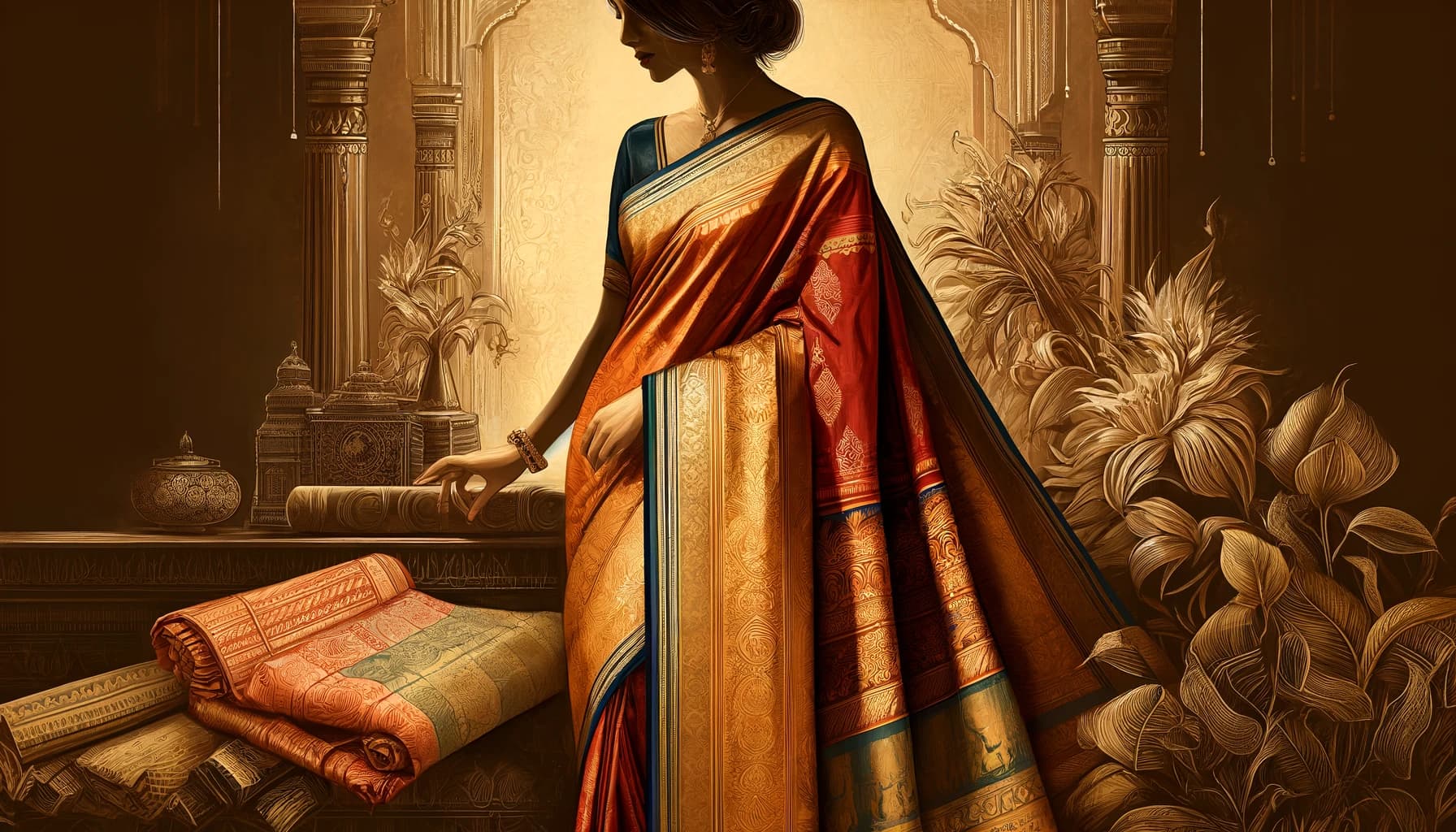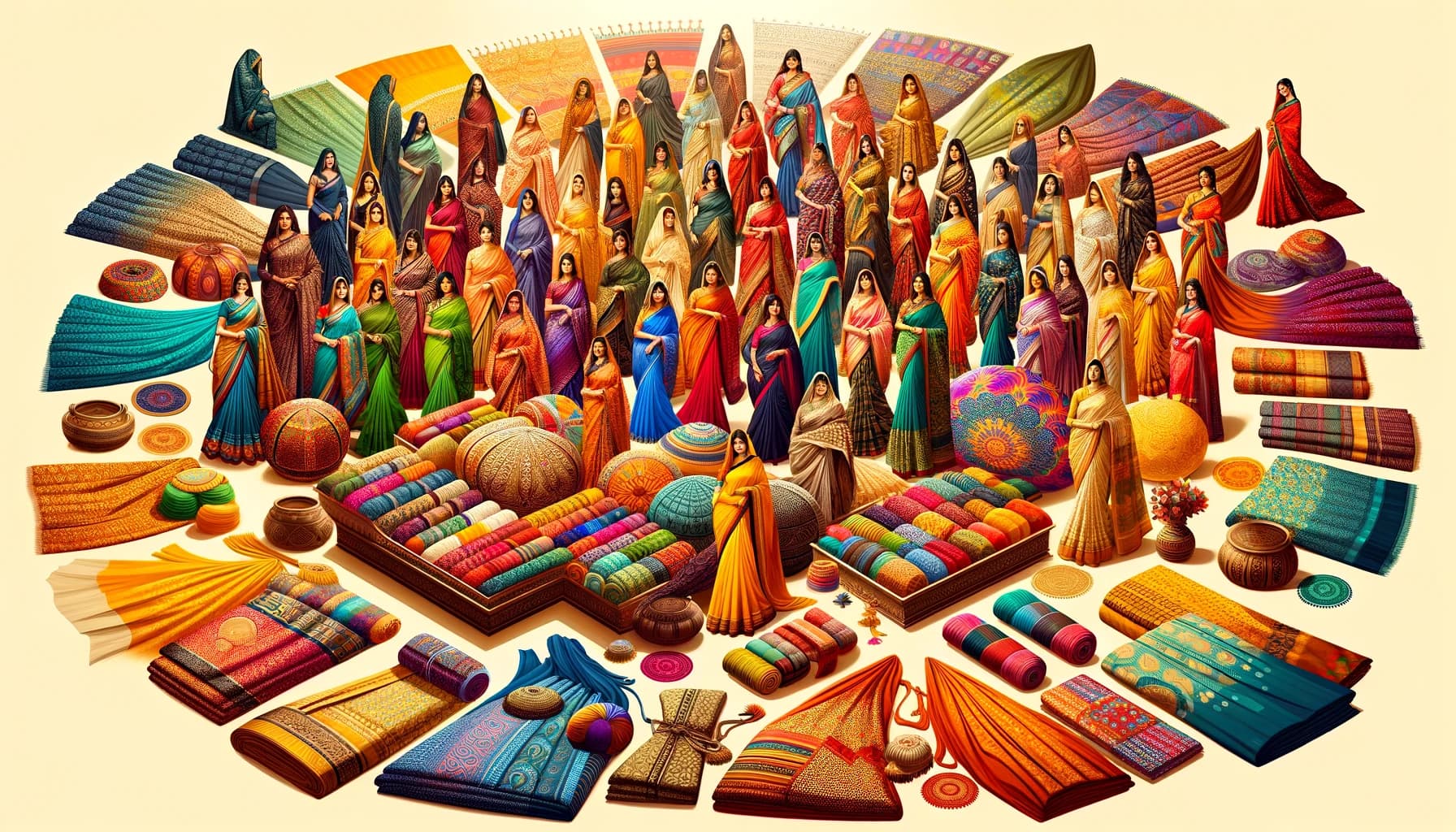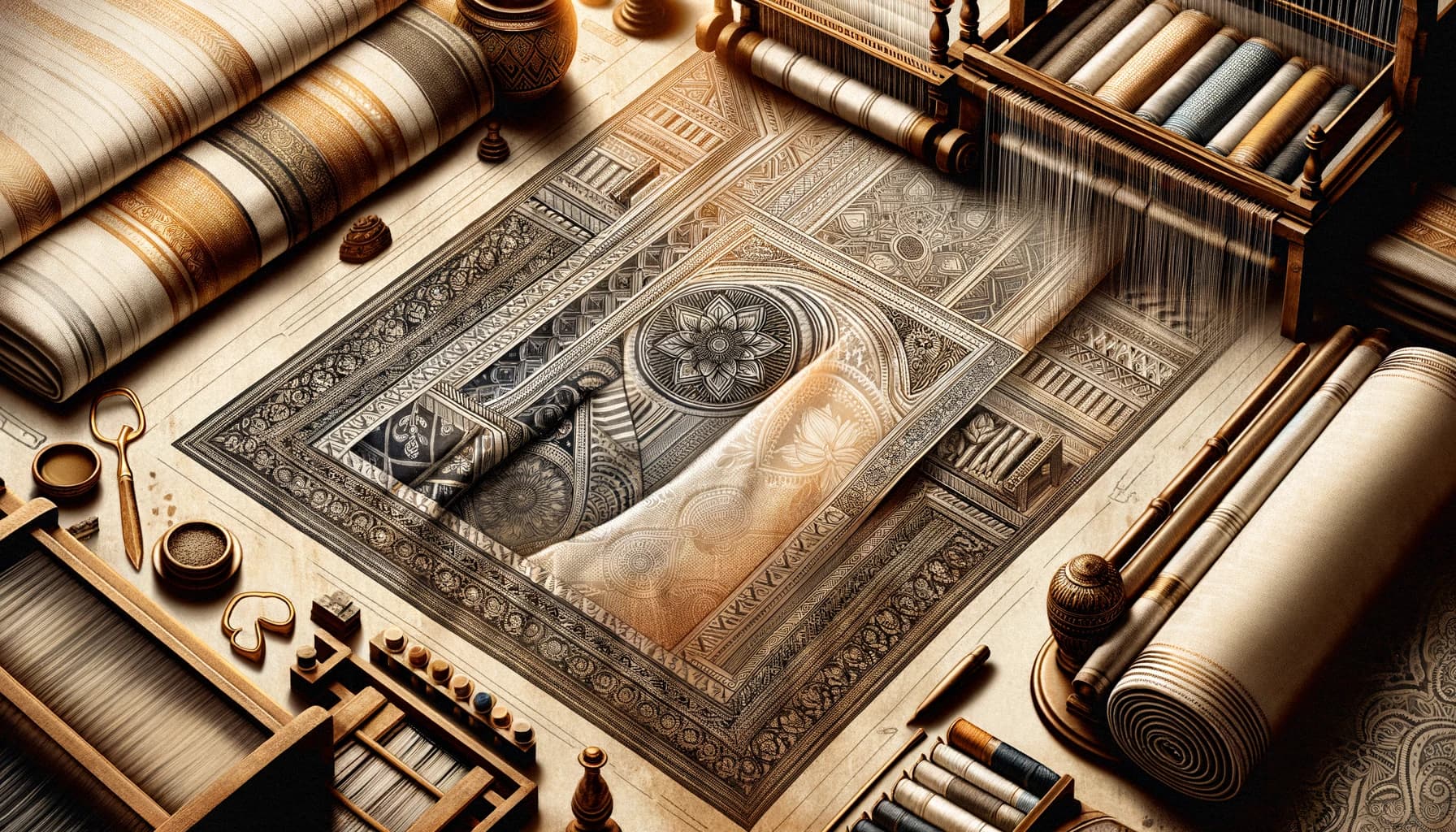
Unveiling the Timeless Elegance: The Origins and History of Kanjivaram Silk Sarees
Introduction to Kanjivaram Sarees
Kanjivaram sarees, renowned for their exquisite craftsmanship and timeless elegance, hold a cherished place in Indian culture and heritage. These opulent silk sarees, originating from the town of Kanchipuram in Tamil Nadu, South India, are prized for their luxurious feel and intricate designs.
History
The origins of Kanjivaram sarees can be traced back to several centuries ago when skilled artisans began weaving silk fabrics using traditional techniques. The town of Kanchipuram, nestled in the southern part of India, emerged as a prominent center for silk weaving, owing to its conducive climate and abundant natural resources.
Over the years, Kanjivaram sarees have evolved, incorporating influences from various dynasties and cultures, yet retaining their distinctive charm and allure. Today, these sarees are celebrated as symbols of grace and sophistication, adorning women on special occasions and festive celebrations.
Cultural Significance
Kanjivaram sarees hold immense cultural significance in Indian society, particularly in the context of weddings and religious ceremonies. They are often passed down through generations as cherished heirlooms, symbolizing tradition and familial bonds.
In Indian weddings, the bride adorning a Kanjivaram saree is considered auspicious, signifying purity, prosperity, and marital bliss. The intricate motifs and vibrant colors woven into these sarees carry symbolic meanings, reflecting the rich tapestry of Indian culture and heritage.
Weaving Technique
What sets Kanjivaram sarees apart is the meticulous weaving technique employed by skilled artisans. The silk used in these sarees is of the highest quality, sourced from mulberry silk worms, known for their lustrous texture and durability.
The weaving process involves intricate handloom techniques, where each saree is meticulously crafted by master weavers. The borders and pallu (decorative end piece) of the saree are adorned with elaborate motifs inspired by nature, mythology, and traditional motifs.
Design Elements
Kanjivaram sarees are characterized by their rich and elaborate design elements, which showcase the artistic prowess of the weavers. Traditional motifs such as paisleys, peacocks, flowers, and geometric patterns adorn the body of the saree, creating a visual spectacle of colors and textures.
The choice of colors in Kanjivaram sarees holds symbolic significance. Red, symbolizing fertility and prosperity, is a popular choice for bridal sarees, while other colors such as green, gold, and blue are also widely favored for their auspicious connotations.
Kanjivaram vs Other Sarees
While there are numerous types of sarees found across India, Kanjivaram sarees stand out for their luxurious look and feel, as well as their intricate weaving techniques. Unlike other sarees, Kanjivaram sarees are known for their heavy silk fabric and bold, contrasting borders, making them ideal for special occasions and grand events.
Celebrity Endorsement
Kanjivaram sarees have garnered international acclaim and have been donned by prominent personalities, both in India and abroad. From Bollywood actresses to political figures, celebrities have often chosen Kanjivaram sarees for their elegance and timeless appeal, thereby furthering their popularity and influence in the fashion world.
Global Recognition
Beyond Indian shores, Kanjivaram sarees have found a global audience, with fashion enthusiasts and connoisseurs appreciating their exquisite craftsmanship and artistic intricacy. These sarees are coveted by collectors and fashionistas worldwide, making them a prized possession for those who appreciate fine craftsmanship and timeless elegance.
Modern Adaptations
While traditional Kanjivaram sarees continue to reign supreme, modern adaptations have also emerged, catering to contemporary tastes and preferences. Designers are experimenting with new color combinations, motifs, and weaving techniques, blending traditional aesthetics with contemporary sensibilities to create sarees that appeal to a younger audience.
Preservation Efforts
Despite the popularity of Kanjivaram sarees, there is a growing concern about the preservation of traditional weaving techniques and craftsmanship. Various initiatives have been launched to support local artisans and promote sustainable practices in silk weaving, ensuring that this centuries-old tradition continues to thrive for generations to come.
Economic Impact
The production and sale of Kanjivaram sarees contribute significantly to the local economy, providing employment opportunities for skilled artisans and weavers in the Kanchipuram region. The demand for these sarees, both domestically and internationally, fuels economic growth and sustains livelihoods, making them not just a symbol of cultural heritage but also an engine of economic prosperity.
Maintenance Tips
To preserve the beauty and longevity of Kanjivaram sarees, proper care and maintenance are essential. It is recommended to dry clean silk sarees to prevent damage to the delicate fabric and intricate embroidery. Storing sarees in a cool, dry place away from direct sunlight can help prevent discoloration and preserve their vibrant colors for years to come.
Conclusion
In conclusion, the origins of Kanjivaram sarees are steeped in tradition and craftsmanship, dating back centuries to a time when skilled artisans wove silk fabrics by hand. Today, these sarees continue to captivate hearts with their timeless elegance and cultural significance, serving as a testament to India's rich heritage and artistic legacy.
FAQs
Can Kanjivaram sarees only be worn in India?
Kanjivaram sarees are primarily associated with Indian culture and are most commonly worn in India, especially during weddings and festive occasions. However, they have also gained popularity internationally, with fashion enthusiasts appreciating their timeless elegance and exquisite craftsmanship.
What makes Kanjivaram silk sarees unique?
Kanjivaram sarees are renowned for their luxurious silk fabric, intricate weaving techniques, and rich design elements. Unlike other sarees, they feature bold borders, elaborate motifs, and vibrant colors, making them stand out as timeless classics.
Are Kanjivaram silk sarees expensive?
Yes, Kanjivaram silk sarees are often considered luxury items due to their intricate craftsmanship and high-quality silk fabric. The price of a saree can vary depending on factors such as the intricacy of the design, quality of silk, and reputation of the weaver.
How can I identify an authentic Kanjivaram saree?
Authentic Kanjivaram silk sarees are known for their unique weaving technique, intricate designs, and high-quality silk fabric. Look for traditional motifs, bold borders, and vibrant colors, and ensure that the saree comes with a hallmark of authenticity from a reputed seller.
Are Kanjivaram sarees suitable for special occasions?
Yes, Kanjivaram silk sarees are perfect for special occasions such as weddings, festivals, and celebratory events. Their timeless elegance and rich cultural heritage make them ideal attire for auspicious occasions, symbolizing grace, tradition, and sophistication.
How should I care for my Kanjivaram silk saree?
To preserve the beauty and longevity of your Kanjivaram silk saree, it is essential to handle it with care. Dry cleaning is recommended to prevent damage to the delicate silk fabric and intricate embroidery. Store the saree in a cool, dry place away from direct sunlight to avoid discoloration and maintain its vibrant colors for years to come.



Leave a comment
This site is protected by hCaptcha and the hCaptcha Privacy Policy and Terms of Service apply.